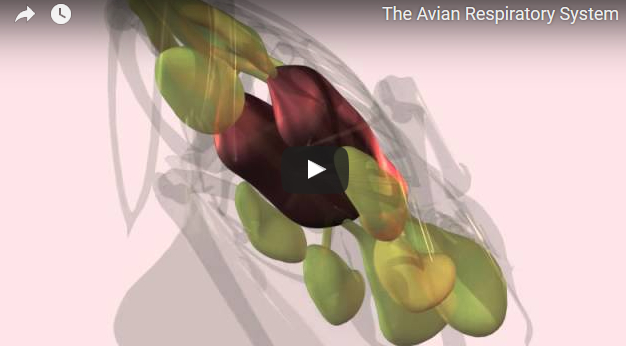That’s how one breath of air moves through the lungs. Except in reality Inhale 1 and 2 are both going on at the same time, as are Exhale 1 and 2. Otherwise they wouldn’t be bringing in any air on the second inhale, which doesn’t make sense. In a diagram like this you’re seeing the steps occurring simultaneously. So in reality it’s more like this:
1) On inhalation, air is pulled down the trachea into the main bronchi and into the posterior air sacs. Air also goes from the lungs and into the anterior air sacs.
2) On exhalation, air from the posterior sacs is pushed through the lungs and air from the anterior sacs is pushed out into the trachea and exhaled.
If this still doesn’t make sense, it’s far easier to see in an animation. Here is a video that explains it and here is a brief animation that puts it all together.
Having unidirectional airflow in their lungs means that air is always moving through the lungs and gas exchange is occurring on both inhalation and exhalation. It’s a far more efficient way to breathe, and it avoids the issue of dead air that mammals have. For the engineering-minded, it’s an example of countercurrent flow.
It also means each breath stays in a bird’s lungs for longer and has more contact with mucous membranes. The downside to being able to get more oxygen out of each breath is that they’re more exposed to any chemicals as well.
So there you have it: yet another reason our tiny dinosaurs are awesome, and why they’re so sensitive to what’s in our air.

